-
 LEICA DM500 Binocular Microscope, with 30 degree Bino EZ tube 10x/B, Plan Objectives (4x/0.1NA, 10x/0.22NA, 40x/0.65NA, Plan 100x/1.25NA) Inmersion oil, us power cord.
LEICA DM500 Binocular Microscope, with 30 degree Bino EZ tube 10x/B, Plan Objectives (4x/0.1NA, 10x/0.22NA, 40x/0.65NA, Plan 100x/1.25NA) Inmersion oil, us power cord. -
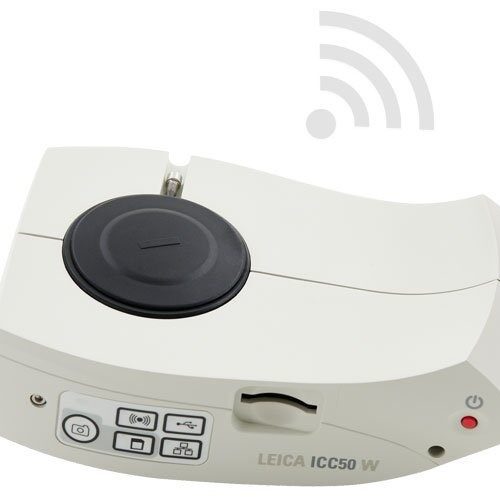 5-megapixel cameras can live-stream HD images to students’ smartphones or tablets. Students can connect to the ICC50 W either through its own internal Wi-Fi signal or through the facilities network. PLEASE NOTE: THIS ITEM IS ONLY AVAILABLE IN PUERTO RICO.
5-megapixel cameras can live-stream HD images to students’ smartphones or tablets. Students can connect to the ICC50 W either through its own internal Wi-Fi signal or through the facilities network. PLEASE NOTE: THIS ITEM IS ONLY AVAILABLE IN PUERTO RICO. -
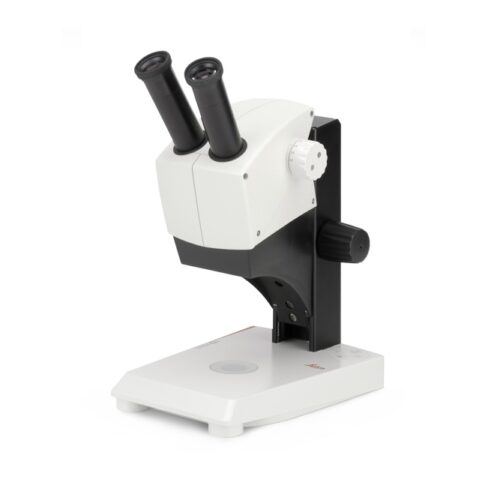 The Leica EZ4 educational stereomicroscope with 4.4:1 zoom for entry level university and college courses such as biology, anatomy and chemistry provides over 20 years of bright LED illumination which saves time and cost of replacement bulbs.
The Leica EZ4 educational stereomicroscope with 4.4:1 zoom for entry level university and college courses such as biology, anatomy and chemistry provides over 20 years of bright LED illumination which saves time and cost of replacement bulbs. -
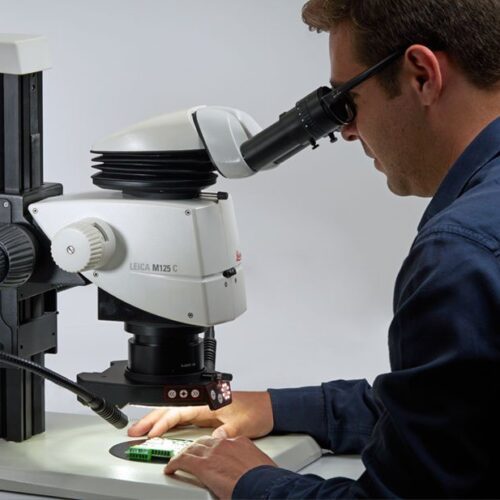 With a Leica M-series stereo microscope you can choose from a comprehensive range of accessories to adapt your microscope to your application, whether it is in materials testing, life science research or forensic application.
With a Leica M-series stereo microscope you can choose from a comprehensive range of accessories to adapt your microscope to your application, whether it is in materials testing, life science research or forensic application. -
 Digital microscope system for digital inspection, observation and measurement. From tiniest detail to an overview, the optics ensures magnification of up to 300x. The built-in HDMI microscope camera provides full high definition live images of up to 30fps and a resolution of 5Mpixels.
Digital microscope system for digital inspection, observation and measurement. From tiniest detail to an overview, the optics ensures magnification of up to 300x. The built-in HDMI microscope camera provides full high definition live images of up to 30fps and a resolution of 5Mpixels. -
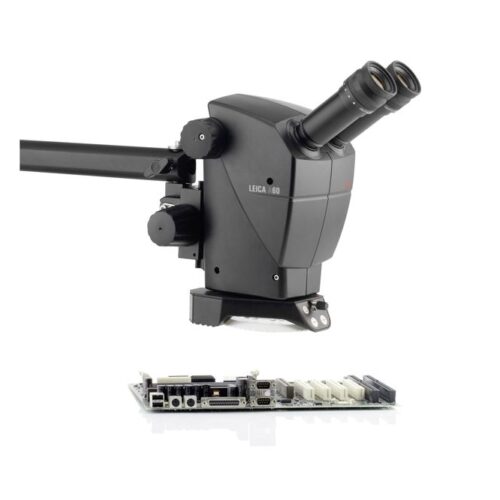 The intuitive A60 F and A60 S stereo microscopes fulfill what you need – high sample throughput, optimum visibility of product details and components, and easy processing of subassemblies. The Leica A60 stereomicroscope does not require the user to be a microscope expert. The components of the preconfigured system are perfectly matched to each other to provide easy operation with the best optical results. Choose between two different stands: the Leica A60 F with flex arm for maximum freedom of movement or the Leica A60 S with swing arm for high stability.
The intuitive A60 F and A60 S stereo microscopes fulfill what you need – high sample throughput, optimum visibility of product details and components, and easy processing of subassemblies. The Leica A60 stereomicroscope does not require the user to be a microscope expert. The components of the preconfigured system are perfectly matched to each other to provide easy operation with the best optical results. Choose between two different stands: the Leica A60 F with flex arm for maximum freedom of movement or the Leica A60 S with swing arm for high stability. -
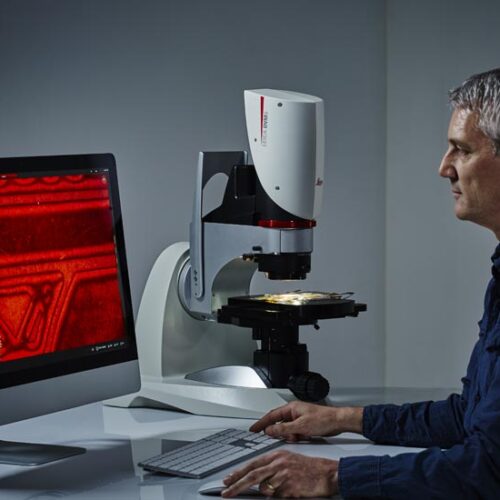 With the DVM6, you can get from the big picture to smallest details in an instant. You can seamlessly carry on working even if changing objective is required, as the sample always stays in focus and no pre-adjustments are needed. With the tilting function you can observe your sample from different angles from up to ±60° With the DVM6, you can get from the big picture to smallest details in an instant. You can seamlessly carry on working even if changing objective is required, as the sample always stays in focus and no pre-adjustments are needed. With the tilting function you can observe your sample from different angles from up to ±60°.
With the DVM6, you can get from the big picture to smallest details in an instant. You can seamlessly carry on working even if changing objective is required, as the sample always stays in focus and no pre-adjustments are needed. With the tilting function you can observe your sample from different angles from up to ±60° With the DVM6, you can get from the big picture to smallest details in an instant. You can seamlessly carry on working even if changing objective is required, as the sample always stays in focus and no pre-adjustments are needed. With the tilting function you can observe your sample from different angles from up to ±60°. -
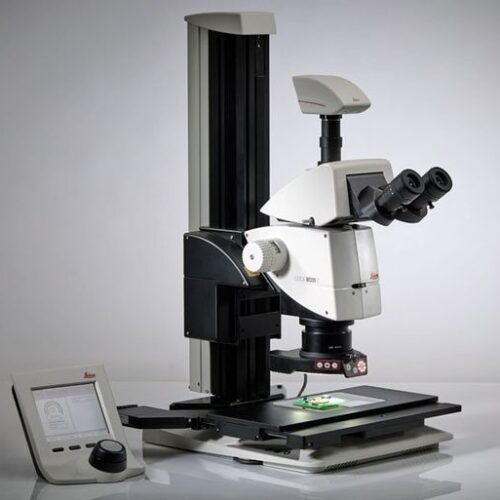 The Leica M205 C, the world’s first stereomicroscope to offer 20.5:1 zoom, uses unique FusionOptics™ technology to provide exceptional image detail and impressive 3D depth perception. Its rigid, sturdy mechanical structure, revolutionary FusionOptics™, and completely integrated multi-contrast illumination, make the M205 C an ideal instrument for questioned document examiners seeking a high-performance microscope capable of revealing fine details.
The Leica M205 C, the world’s first stereomicroscope to offer 20.5:1 zoom, uses unique FusionOptics™ technology to provide exceptional image detail and impressive 3D depth perception. Its rigid, sturdy mechanical structure, revolutionary FusionOptics™, and completely integrated multi-contrast illumination, make the M205 C an ideal instrument for questioned document examiners seeking a high-performance microscope capable of revealing fine details. -
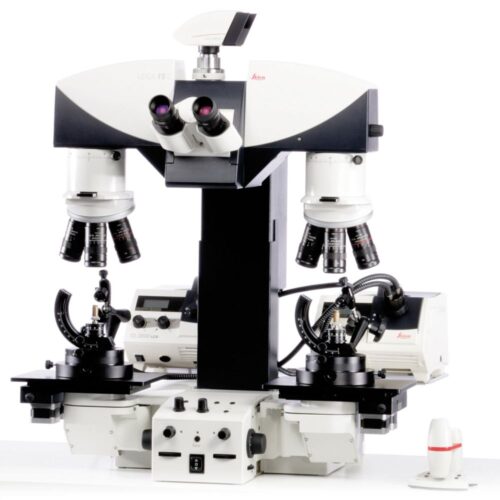 Leica FS C motorized comparison macroscope is used for a wide range of forensic investigations including ballistics, toolmark, and document comparison. Intelligent Automation combines with outstanding ergonomic design.
Leica FS C motorized comparison macroscope is used for a wide range of forensic investigations including ballistics, toolmark, and document comparison. Intelligent Automation combines with outstanding ergonomic design. -
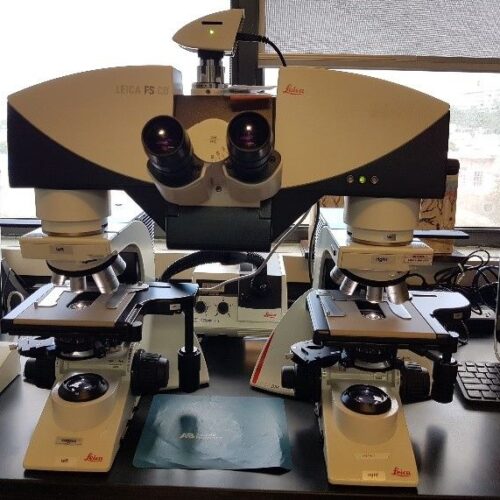 The Leica FS 2500 TL features two Leica DM2500 or DM2700P microscopes with transmitted light illumination under the motorized comparison bridge Leica FSCB. The Leica FS 2500 TL enables high precision comparison of two objects at magnifications up to 1000x, in transmitted light brightfield, transmitted polarized light and transmitted light phase contrast, supplying reliable evidence of the tiniest differences in their microstructure, texture and color.
The Leica FS 2500 TL features two Leica DM2500 or DM2700P microscopes with transmitted light illumination under the motorized comparison bridge Leica FSCB. The Leica FS 2500 TL enables high precision comparison of two objects at magnifications up to 1000x, in transmitted light brightfield, transmitted polarized light and transmitted light phase contrast, supplying reliable evidence of the tiniest differences in their microstructure, texture and color. -
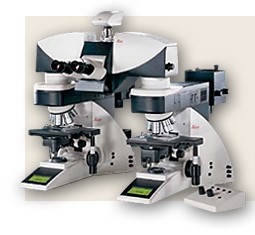 The Leica DM4 B complements perfectly the micro comparison bridge. Its fully automatic light management, integrated Variolux color module, selected optics pairs and reproducible illumination ensure you the greatest possible comparison reliability. Contrast methods are available at the touch of a button, while the microscope parameters are automatically stored by the software. The results are thus reproducible at any time.
The Leica DM4 B complements perfectly the micro comparison bridge. Its fully automatic light management, integrated Variolux color module, selected optics pairs and reproducible illumination ensure you the greatest possible comparison reliability. Contrast methods are available at the touch of a button, while the microscope parameters are automatically stored by the software. The results are thus reproducible at any time. -
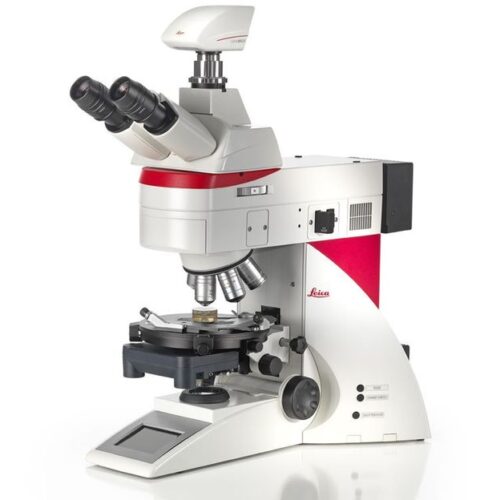 Fully coded and semi-automated. The Leica DM4 P automatically detects which contrast method and objective are being used. This provides valuable consistency and reproducibility for your research. Manual diaphragm setting is no longer required, either in the transmitted light or incident light method. Light intensity automatically adjusts to the objective. Image brightness remains constant when switching objectives, which eliminates glare.
Fully coded and semi-automated. The Leica DM4 P automatically detects which contrast method and objective are being used. This provides valuable consistency and reproducibility for your research. Manual diaphragm setting is no longer required, either in the transmitted light or incident light method. Light intensity automatically adjusts to the objective. Image brightness remains constant when switching objectives, which eliminates glare.
